The 12 Jyotirlingas are revered as the holiest shrines of Lord Shiva, the Hindu god celebrated as the destroyer of evil and the creator of the universe. These sacred Jyotirlingas believed to emanate divine light, are located in various regions across India. Pilgrims from around the globe travel to these sites to seek blessings, gain spiritual insight, and experience profound devotion. In this article, we will delve into the significance of the 12 Jyotirlingas, their geographical locations, and the fascinating legends that surround them.
Thank you for reading this post, don't forget to subscribe!| Jyotirlinga | Location | Key Highlight |
|---|---|---|
| 1. Somnath | Gujarat | First Jyotirlinga, symbol of faith. |
| 2. Mallikarjuna | Andhra Pradesh | Shiva-Shakti unity. |
| 3. Mahakaleshwar | Madhya Pradesh | Known for ‘Bhasma Aarti’. |
| 4. Omkareshwar | Madhya Pradesh | Island in the shape of ‘ॐ’. |
| 5. Kashi Vishwanath | Uttar Pradesh | Gateway to salvation. |
| 6. Trimbakeshwar | Maharashtra | Three-faced Jyotirlinga. |
| 7. Baidyanath | Jharkhand | Healing powers of the lingam. |
| 8. Bhimashankar | Maharashtra | Origin of River Bhima. |
| 9. Kedarnath | Uttarakhand | Highest-altitude Jyotirlinga. |
| 10. Grishneshwar | Maharashtra | Smallest Jyotirlinga temple. |
| 11. Rameshwar | Tamil Nadu | Part of Char Dham Yatra. |
| 12. Nageshwar | Gujarat | Symbol of protection. |
1. Somnath Jyotirlinga
The first of Lord Shiva’s twelve holy Jyotirlingas, Somnath Jyotirlinga is a prominent Hindu temple in Prabhas Patan, Gujarat. The temple, which has been demolished and rebuilt several times, represents enduring faith and fortitude and has great spiritual and historical value. Standing majestically on the banks of the Arabian Sea is its magnificent architecture, which has elaborate carvings and a tall shikhara. The temple is a popular pilgrimage destination because of its calm settings and holy atmosphere, which draw devotees from all over the world.
- Cultural Significance: Among Lord Shiva’s twelve Jyotirlingas, the first is Somnath Jyotirlinga in Gujarat. Because it was rebuilt several times after being destroyed by invaders, it has great spiritual significance and represents resiliency. The temple is known as Somnath (Lord of the Moon) because it is connected to Chandra, the Moon God, who worshipped Shiva here to restore his brightness. Pilgrims think that coming here will offer them moksha, or freedom, and wipe away their sins.
- Rituals: The Aarti, which is done three times a day at the Somnath Jyotirlinga—morning at 7:00 AM, afternoon at 12:00 PM, and evening at 7:00 PM—starts daily rituals and fills the temple with spiritual energy and holy chanting. As a sign of devotion and purity, devotees serve the Shivling milk, honey, water, and bilva leaves during the holy Abhishekam. Pilgrims can seek blessings all day long as the temple is open for darshan from 6:00 AM to 9:00 PM. A spiritually and culturally stimulating experience is provided by the temple’s fascinating Sound and Light Show, which takes place at 8:00 PM and tells the tale of Somnath’s rich history and legacy.
- Best time to Visit: For beautiful weather, October through March is the best time to visit.
2. Mallikarjuna Jyotirlinga
One of the twelve Jyotirlingas devoted to Lord Shiva is Mallikarjuna Jyotirlinga, which is situated in Srisailam, Andhra Pradesh. The temple, which combines architectural and spiritual magnificence, is located on the banks of the Krishna River. Because it incorporates the Jyotirlinga (Shiva) and Shakti Peetha (Goddess Parvati), it is sometimes referred to as Kailasa of the South and has particular significance. The temple is a popular pilgrimage site that draws devotees from all across India because of its elaborate carvings, soaring gopurams, and tranquil environment.
- Cultural Significance: With its roots in Hindu mythology, Mallikarjuna Jyotirlinga represents the celestial union of Lord Shiva and Goddess Parvati. It is thought that sins are forgiven and salvation (moksha) is granted by visiting this temple. One of the few places where Shiva and Shakti are worshipped together is the temple, which is also regarded as a Shakti Peetha. Devotees think that coming here on pilgrimage brings riches and satisfies aspirations.
- Rituals: The daily rites of Mallikarjuna Jyotirlinga are carried out with great devotion. The Aarti, which starts the day, creates a beautiful aura as religious songs reverberate throughout the temple. with the sacred practice known as the Abhishekam, devotees bathe the Shiva Lingam with a mixture of milk, water, honey, and bilva leaves, which stand for devotion and cleanliness. The Kumkum Archana is a unique sacrifice made to Goddess Bhramaramba, who is a manifestation of Parvati, to obtain her blessings for wealth and health. The temple hosts the Palki Seva, a magnificent ceremonial procession of the deity inside the temple complex, to enhance the spiritual experience and provide devotees with a close-up look at and celebration of the divine presence.
- Best Time to Visit: October through March are the best months to go because of the nice weather. At festivals like Maha Shivaratri, Navratri, and Brahmotsavam, the temple is particularly lively.
3. Mahakaleshwar Jyotirlinga
Mahakaleshwar Jyotirlinga, situated in Ujjain, Madhya Pradesh, is one of the most venerated and ancient temples dedicated to Lord Shiva. It is said that merely viewing the Jyotirlinga can lead to liberation from the cycle of birth and death. This profound spiritual significance attracts countless devotees seeking solace and enlightenment at this sacred site.
- Cultural Significance: One of Lord Shiva’s twelve revered Jyotirlingas, Mahakaleshwar Jyotirlinga is situated in Ujjain, Madhya Pradesh. Being the sole Jyotirlinga where Shiva is worshipped in his Swayambhu (self-manifested) form and facing south (Dakshinamukhi), signifying his position as the conqueror of time and death, it has great spiritual significance. The historic city of Ujjain, a significant hub for astrology and the Kumbh Mela is likewise intimately associated with the temple. It is thought that going to Mahakaleshwar guarantees moksha (liberation) and protects against evil energy.
- Rituals: The temple is well known for its distinctive Bhasma Aarti, which is held every day at 4:00 AM and involves anointing the lingam with sacred ash to represent the cycle of life and death. In Abhishekam, devotees can also serve Lord Shiva milk, honey, water, and bilva leaves. Additional rites for protection and well-being include Mahamrityunjaya Jaap, Laghu Rudra Pooja, and Rudrabhishek. The temple offers several aartis throughout the day and is open from 4:00 AM to 11:00 PM.
- Best Time to Visit: October through March are the best months to visit Mahakaleshwar Jyotirlinga because of the lovely weather. Devotees from around the nation go to the temple for the great events that take place during Maha Shivaratri and the month of Shravan (July-August).
4. Omkareshwar Jyotirlinga
Omkareshwar Jyotirlinga, located on an island in the Narmada River in Madhya Pradesh, is steeped in unique mythology. The temple’s lingam is believed to take the shape of the sacred syllable “Om,” symbolizing the omnipresence of Lord Shiva. This distinctive feature, along with its serene setting, draws many devotees who seek spiritual connection and blessings at this revered site.
- Cultural Significance: One of Lord Shiva’s twelve revered Jyotirlingas, Omkareshwar Jyotirlinga is situated on Mandhata Island in the Narmada River in Madhya Pradesh. The island’s natural form resembles the holy Hindu sign “ॐ” (Om), which stands for the global essence and cosmic sound. Worshipping at Omkareshwar is thought to bring about moksha or spiritual emancipation. Ancient writings such as the Shiva Purana and Skanda Purana also refer to the temple, underscoring its heavenly significance.
- Rituals: The Mangala Aarti, which fills the temple with holy chanting before daybreak, is the first of the daily rites at Omkareshwar. As a sign of devotion and purity, devotees serve the Shiva Lingam milk, honey, water, and bilva leaves during Abhishekam. A unique rite known as Rudrabhishek is done to ask Lord Shiva for health and wealth. Furthermore, completing a 7-kilometre circumambulation around the island, known as parikrama, is seen as extremely fortunate.
- Best Time to Visit: October through March, when the weather is nice, are the ideal months to visit Omkareshwar. Thousands of devotees go to the temple during Maha Shivaratri and the holy month of Shravan (July–August), when it is particularly lively.
5. Kedarnath Jyotirlinga
Kedarnath Jyotirlinga, nestled at an altitude of 3,583 meters in the stunning Himalayan range of Uttarakhand, is regarded as one of the holiest shrines in Hinduism. This sacred site is believed to be where Lord Shiva granted absolution to the Pandavas for their sins following the Kurukshetra war. Its majestic surroundings and deep spiritual significance make Kedarnath a vital pilgrimage destination for devotees seeking redemption and divine connection.
- Cultural Significance: One of Lord Shiva’s twelve Jyotirlingas, Kedarnath Jyotirlinga is situated in Uttarakhand and is of great spiritual significance. It is a component of the revered Char Dham pilgrimage and is located close to the Mandakini River in the heart of the beautiful Himalayas. Legend has it that following the Mahabharata battle, the Pandavas came here to seek Shiva’s blessings to atone for their transgressions. Constructed by the Pandavas and subsequently restored by Adi Shankaracharya, the temple represents discipline, dedication, and freedom (moksha).
- Rituals: The Shiva Lingam is washed in ghee, milk, and water during the Mahabhishek Aarti, which takes place at dawn. Rudrabhishek is a potent ceremony that devotees can partake in to ask for blessings for protection and prosperity. The day’s worship concludes with the Shayana Aarti, which is done in the evening. The deity is moved to the Omkareshwar Temple in Ukhimath during the winter so that worshippers can continue to offer prayers there.
- Best Time to Visit: The temple is only open throughout the summer and early fall months of April/May through October/November. May, June, and September are the ideal months to go because of the lovely weather and ideal hiking conditions. The god is worshipped at Ukhimath, and the temple is closed in the winter because of the severe snowfall. Two particularly important times to visit are Maha Shivaratri and Akshaya Tritiya, the temple’s opening day.
6. Bhimashankar Jyotirlinga
Bhimashankar Jyotirlinga, nestled in the scenic Sahyadri Mountains of Maharashtra, is a site of great spiritual importance. The temple features stunning architecture adorned with intricate carvings and sculptures, appealing to both devotees and art lovers alike. Its serene location and artistic beauty make Bhimashankar a must-visit destination for those seeking spiritual enrichment and cultural appreciation.
- Cultural Significance: One of Lord Shiva’s twelve revered Jyotirlingas, Bhimashankar Jyotirlinga is situated in Maharashtra’s Sahyadri highlands. The story of Lord Shiva’s conflict with the demon Bhim, the son of Kumbhakarna, after whom the temple is called, is linked to the temple. This sacred location is said to be the birthplace of the Bhima River. The temple’s tranquil and spiritual atmosphere is enhanced by the surrounding verdant Bhimashankar Wildlife Sanctuary, which was constructed in the Nagara architectural style. The temple, which represents Lord Shiva’s protecting might and the victory of good over evil, is a popular destination for pilgrims.
- Rituals: The Kakad Aarti (morning aarti), which fills the temple with holy vibrations, is a part of the daily devotion at Bhimashankar. As a sign of devotion and purity, devotees serve the Shiva Lingam milk, water, honey, and bilva leaves during the Abhishekam. For the sake of peace and prosperity, the Maha Rudrabhishek is performed. Maha Shivaratri is celebrated with tremendous zeal and includes special prayers and processions.
- Best Time to Visit: October through March are the ideal months to visit Bhimashankar because of the mild, pleasant weather that is ideal for hiking and forest exploration. Thousands of devotees go to the temple during Maha Shivaratri and the holy month of Shravan (July–August), when it is particularly lively.
7. Kashi Vishwanath Jyotirlinga
The Vishwanath Jyotirlinga, situated in the sacred city of Varanasi, Uttar Pradesh, is considered the most revered among all Jyotirlingas. Known for its deep spiritual significance, Varanasi draws millions of devotees annually to the Lord Vishwanath Temple, making it a pivotal destination for religious pilgrims. The temple is a representation of spiritual enlightenment and freedom (moksha) and is located on the banks of the holy Ganga River. Built with gold provided by Maharaja Ranjit Singh of Punjab, its imposing golden spire serves as a symbol of faith. For ages, the temple has been a major destination for pilgrims, drawing saints, academics, and followers from all over the world. The temple is a deeply spiritual place because of its elaborate construction, a holy sanctuary that houses the Shiva Lingam, and proximity to Varanasi’s well-known ghats.
- Cultural Significance: One of Lord Shiva’s twelve Jyotirlingas, the Kanchi Vishwanath Jyotirlinga in Varanasi, Uttar Pradesh, is extremely significant spiritually. Considered the oldest surviving city in the world, Varanasi is known as the City of Light and is thought to be the location where Shiva bestows emancipation (moksha) on his followers. Bathing in the Ganga River before praying is said to be very lucky because the temple is located on its banks. For ages, the temple has drawn visitors, intellectuals, and saints as a hub of learning and spirituality. Pure devotion during a visit to Kashi Vishwanath is thought to guarantee liberation from the cycle of birth and death.
- Rituals: The Mangala Aarti, which is conducted before dawn with devotional songs and chants, marks the temple’s early opening. One of the main offerings made by devotees is the traditional bathing of the Shiva Lingam with milk, honey, ghee, and bilva leaves, known as abhishekam. To ask Lord Shiva for peace and prosperity, Rudrabhishek is done. Every evening, hundreds of devotees participate in the lovely tradition known as Saptarishi Aarti. For their ancestors, many pilgrims also conduct Pind Daan on Varanasi’s ghats.
- Best Time to Visit: October through March are the best months to visit Kashi Vishwanath because of the excellent weather that allows you to explore the temple and the neighbouring ghats. The months of July through August are Shravan and Maha Shivaratri, when the temple is very lively. It is an amazing experience to visit during Dev Deepawali, when thousands of lamps illuminate the ghats.
8. Trimbakeshwar Jyotirlinga
Trimbakeshwar Jyotirlinga, located in the town of Trimbak, Maharashtra, is renowned for its distinctive features. It is the only Jyotirlinga that represents the divine trinity of Lord Brahma, Lord Vishnu, and Lord Shiva, making it a unique and sacred pilgrimage site. Constructed from black stone, the temple is renowned for its distinctive lingam, which features three faces that stand for Brahma, Vishnu, and Mahesh (Shiva). Its location close to the holy Godavari River’s source enhances its mystical importance.
- Cultural Significance: As one of Lord Shiva’s twelve esteemed Jyotirlingas, Trimbakeshwar Jyotirlinga is extremely spiritually significant. The temple is regarded as extremely sacred and is situated near the source of the holy Godavari River. It is thought that rituals performed here lead to moksha or freedom from the cycle of life and death. Legend has it that following the penance of the sage Gautama to bring the river Godavari to earth, Lord Shiva appeared at Trimbak. Because of this, it is a popular location for ancestral rites including Tarpan, Shraddha, and Pind Daan, which are carried out for the sake of the deceased’s serenity.
- Rituals: At Trimbakeshwar, the Mangala Aarti at sunrise ushers in the day with vibrations and holy chants. Sacred objects like milk, water, honey, and bilva leaves are used by devotees to offer Abhishekam to the Shiva Lingam, signifying devotion and cleanliness. The trinity of Brahma, Vishnu, and Mahesh (Shiva), which is uncommon in other Jyotirlingas, is symbolized by the temple’s distinctive lingam. Regularly performed special rituals include the Rudrabhishek, which involves reciting Vedic mantras, and the Mahamrityunjaya Jaap, which is renowned for its potent healing and protecting energies. The Kaal Sarp Dosh Nivaran and Narayan Nagbali pujas, which are said to be very successful in clearing karmic impediments and ancestral curses, are also performed by devotees.
- Best Time to Visit: October through March are the best months to visit Trimbakeshwar Jyotirlinga because of the mild temperature, which makes it easy to explore the temple and take part in ceremonies. During the Maha Shivaratri festival, which honours Lord Shiva with magnificent processions, all-night vigils, and special prayers, the temple is particularly lively.
9. Vaidyanath Jyotirlinga
Vaidyanath Jyotirlinga, situated in Deoghar, Jharkhand, is steeped in a legendary tale from the Hindu epic, Ramayana. According to tradition, it is the sacred site where Lord Vishnu’s Sudarshan Chakra is believed to have vanquished the demon king Ravana, making it a place of profound religious significance. In the Ramayana, Ravana, a loyal devotee of Shiva, is reported to have worshipped at the temple to acquire power. Since Shiva is said to have healed Ravana’s wounds, the temple’s name, Vaidyanath (meaning Lord of Physicians), alludes to his healing abilities. The main shrine and twenty-one minor smaller temples honouring various deities make up the temple complex, which was constructed in the typical North Indian style.
- Cultural Significance: Deep spiritual and cultural significance is attached to Vaidyanath Jyotirlinga. Legend has it that Lord Shiva showed up here to treat Ravana’s wounds, signifying his heavenly ability to heal and grant health. Devotees think that praying at the temple will cure illnesses and provide wealth, and it is regarded as a centre for spiritual healing. Vaidyanath Jyotirlinga is also important for carrying out ancestor-related religious rites like Rudrabhishek and Pind Daan. During the Shravani Mela, a month-long celebration that draws millions of devotees, the temple is a popular site. At Sultanganj, pilgrims bring holy water from the Ganges to present to Lord Shiva.
- Rituals: Devotees donate water, milk, ghee, and bilva leaves to the Shiva Lingam during the Abhishekam at Vaidyanath Jyotirlinga. With the help of Vedic mantras, the Rudrabhishek asks Lord Shiva for protection and wealth. Thousands of Kanwariyas take part in the Shravani Kanwar Yatra, which involves trekking barefoot from Sultanganj to Deoghar to pour Ganga water on the lingam during the holy month of Shravan (July–August). The temple is filled with spiritual energy from the daily puja and aarti, which include the Shayana Aarti at night and the Mangala Aarti in the morning.
- Best Time to visit: October through March is the ideal time to go. The biggest celebrations take place during the Shravani Mela (July–August), which is marked by the magnificent Kanwar Yatra, and Maha Shivaratri, which is marked by elaborate rituals and prayers that go all night.
10. Nageshwar Jyotirlinga
Nageshwar Jyotirlinga, located in Dwarka, Gujarat, holds great significance in Hindu mythology. Renowned for its stunning architectural design, the temple is set amidst the tranquil surroundings of the Arabian Sea, adding to its spiritual and aesthetic appeal. Devotees from all over India are drawn to the temple because of its tranquil environment and imposing 25-meter-tall Shiva statue. The temple is said to symbolize the location where Lord Shiva slew the demon Daaruka in order to save his follower Supriya. This place has a distinctive lingam that represents defense against all malevolent energies.
- Cultural Significance: The snake is a symbol of strength and protection, and Lord Shiva is portrayed as the guardian against negativity and bad energies at Nageshwar Jyotirlinga. The victory of devotion and virtue over evil is symbolized by the temple, where Lord Shiva saved his follower Supriya from the demon Daaruka, according to the Shiv Purana. It is a well-liked location for people looking for protection and healing since it is thought that worshiping here shields followers from poison, fear, and illnesses. The idea of Naga worship, which has long been a major component of Hindu customs and represents fertility, rebirth, and the regeneration of life, is also connected to the temple. Prayers offered here, according to devotees, will bring calm and erase Kaal Sarp Dosh, a serious astrological ailment.
- Rituals: To represent dedication and cleansing, the lingam is subjected to a daily Abhishekam using milk, water, honey, and bilva leaves. Using Vedic chanting, the Rudrabhishek ritual is conducted to ask Lord Shiva for protection and prosperity. A very spiritual environment is produced by special aarti ceremonies, such as the Shayana Aarti (night) and Mangala Aarti (dawn). In addition, devotees take part in the Mahamrityunjaya Jaap, which is thought to provide longevity and protection.
- Best Time to Visit: October through March, when the weather is nice, is the ideal time to go. During the holy month of Shravan (July–August), when devotees swarm for special pujas and sacrifices, and Maha Shivaratri, which is celebrated with nightly prayers and elaborate ceremonies, the temple is particularly lively.
11. Rameshwar Jyotirlinga
Rameshwar Jyotirlinga, situated on the island of Rameshwaram in Tamil Nadu, is revered as the site where Lord Rama prayed to Lord Shiva for blessings before constructing a bridge to Lanka. This legendary act was part of his quest to rescue his wife, Sita, from the demon king Ravana, adding to the temple’s deep spiritual significance. Because it is said that Lord Rama worshipped Shiva here before constructing the Ram Setu (bridge to Lanka) to save Sita from Ravana, the temple has a strong connection to the Ramayana. The temple is famous for its magnificent architecture, which includes the longest temple hallway in the world with pillars that are artistically carved.
- Cultural Significance: Lord Rama, an avatar of Vishnu, worships Lord Shiva at Rameshwar Jyotirlinga, signifying the holy union of Shaivism and Vaishnavism and emphasizing the harmony between these two major Hindu faiths. The Ramayana states that during his conflict with Ravana, Lord Rama begged for forgiveness of all his sins and placed the Shiva Lingam here. It is a vital component of spiritual travels since pilgrims believe that carrying out rituals here atones for past misdeeds and bestows salvation (moksha). The temple is a must-do trip for Hindus as it is one of the four holy locations in the Char Dham Yatra, which also includes Puri, Dwarka, and Badrinath.
- Rituals: The “Snana,” or holy bath, in each of the temple’s 22 theerthams, or sacred wells, is a crucial rite. Each is said to offer certain spiritual advantages. Following the Abhishekam, devotees present the Shiva Lingam with milk, water, and bilva leaves. To promote health and longevity, special Rudrabhishekams and Mahamrityunjaya Jaap are performed. A very spiritual ambience is produced by the daily Shayana Aarti (night) and Mangala Aarti (dawn).
- Best time to Visit: The ideal time to visit Rameshwar Jyotirlinga is between October and April when the weather is suitable for rituals and temple visits. During Maha Shivaratri and the month of Shravan (July–August), the temple is very lively. Thousands of followers are also drawn to the yearly Rama Navami celebration, which commemorates the birth of Lord Rama.
12. Grishneshwar Jyotirlinga
Grishneshwar Jyotirlinga, located near the Ellora Caves in Maharashtra, is celebrated for its exquisite architecture and spiritual ambience. Legend has it that the temple was rebuilt in the 18th century by the devoted queen Ahilyabai Holkar, enhancing its historical and religious importance. The temple is well known for its magnificent architecture, which includes a five-tiered shikhara (temple tower) and elaborate sculptures. Queen Ahilyabai Holkar, who is renowned for rebuilding several holy temples in India, renovated it in the 18th century. Both visitors and devotees are drawn to the temple by its historical significance and tranquil environment.



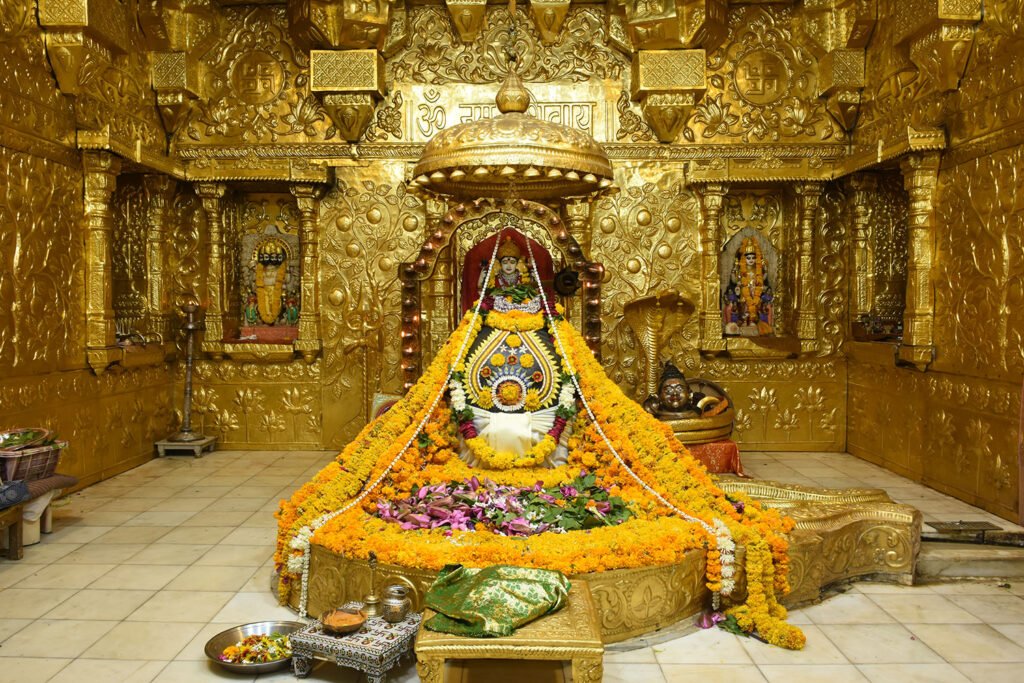
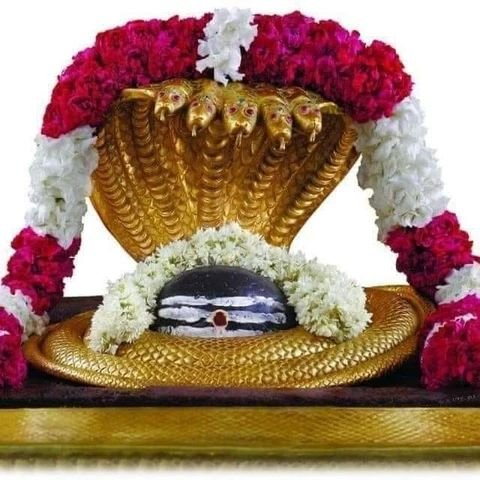
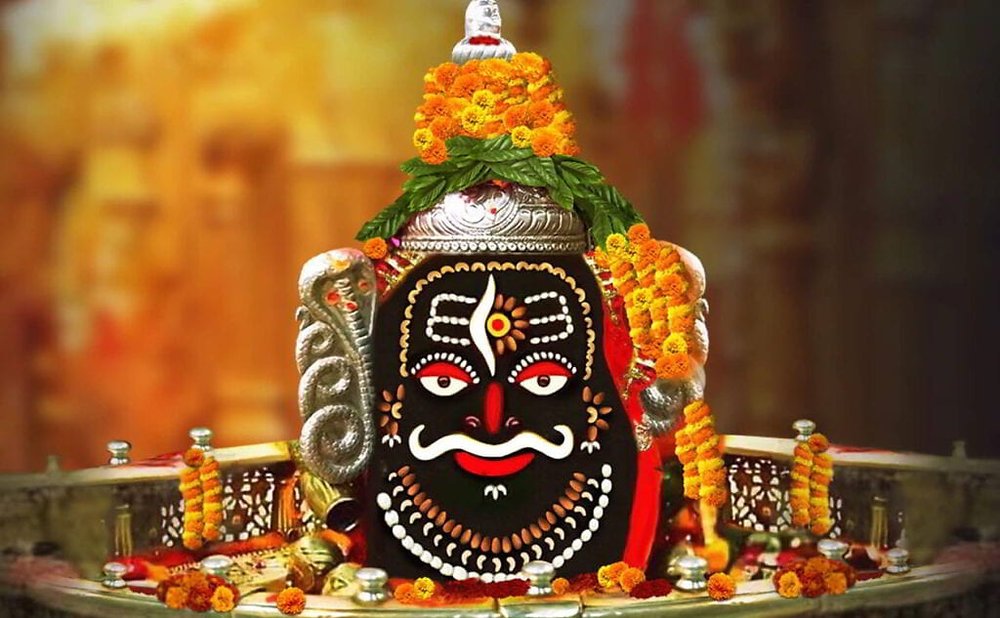
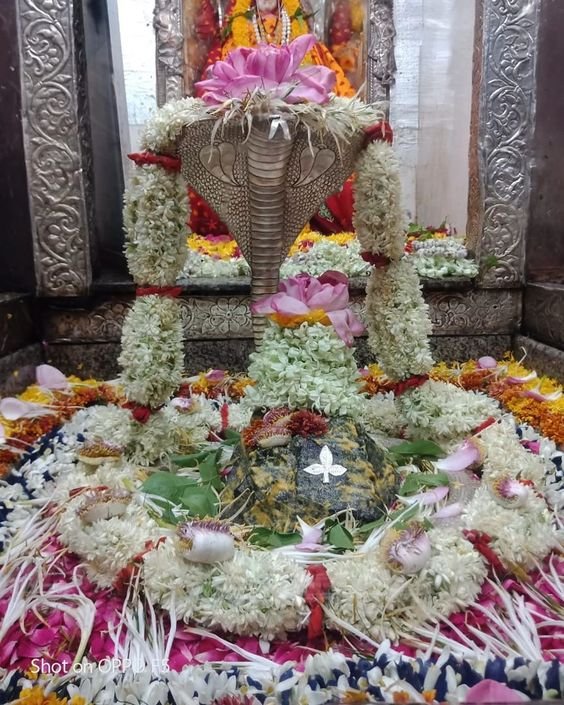
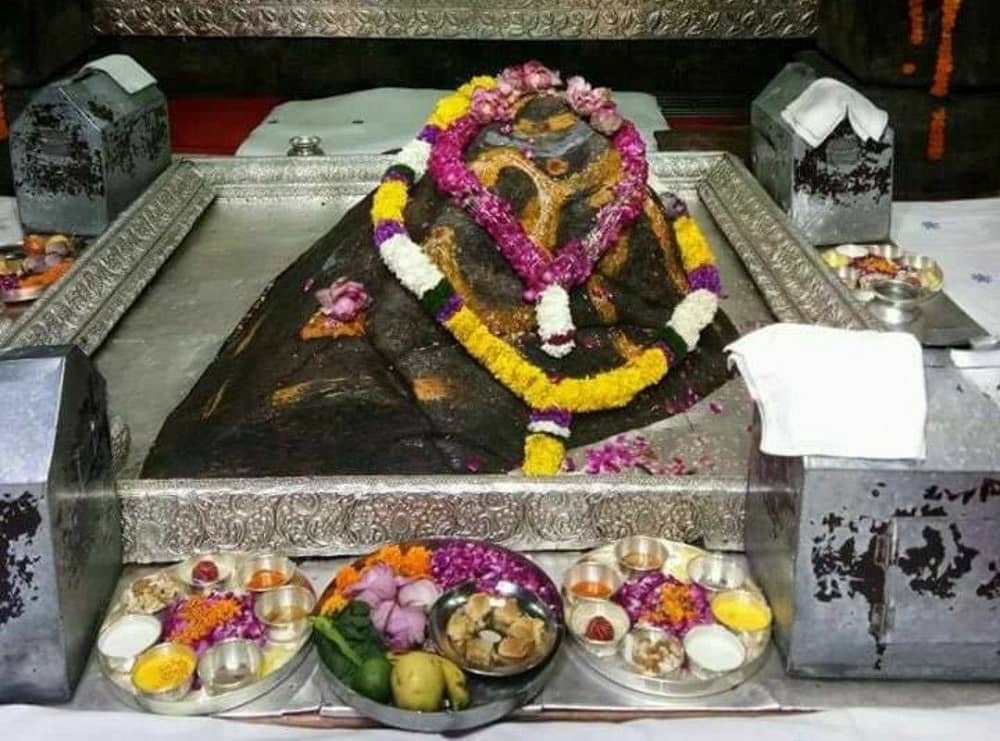
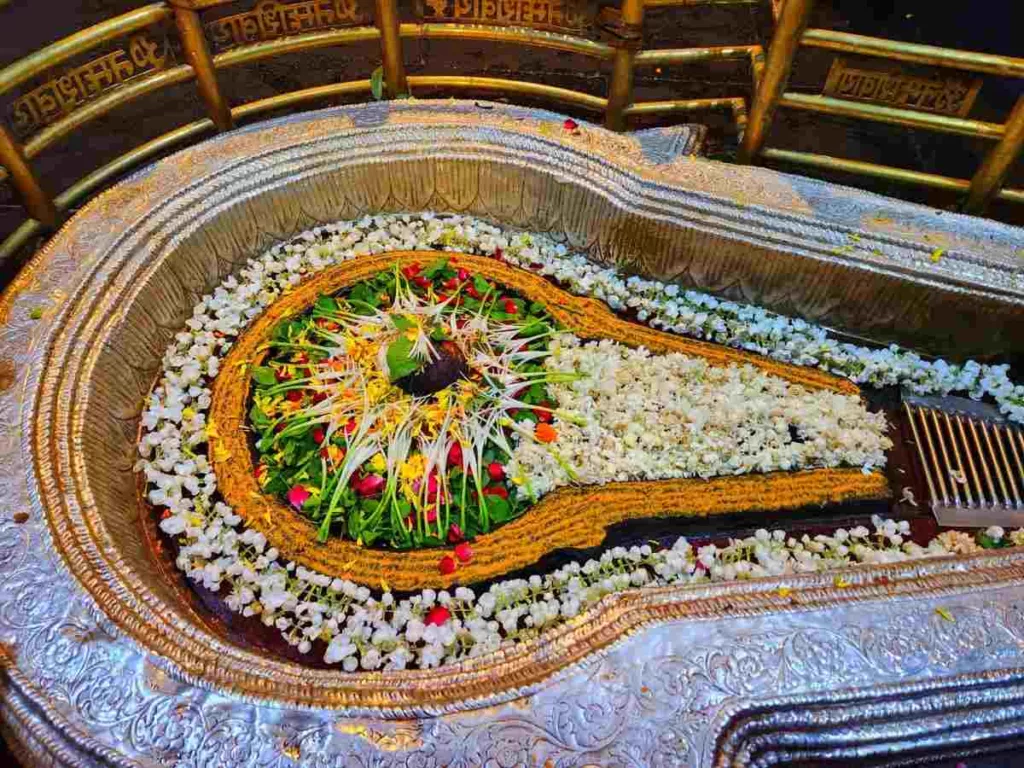
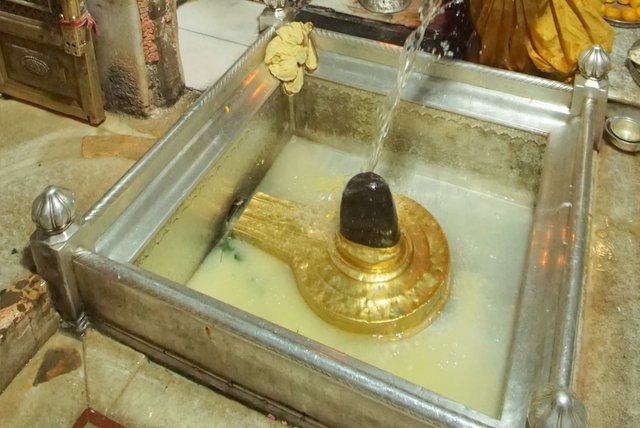
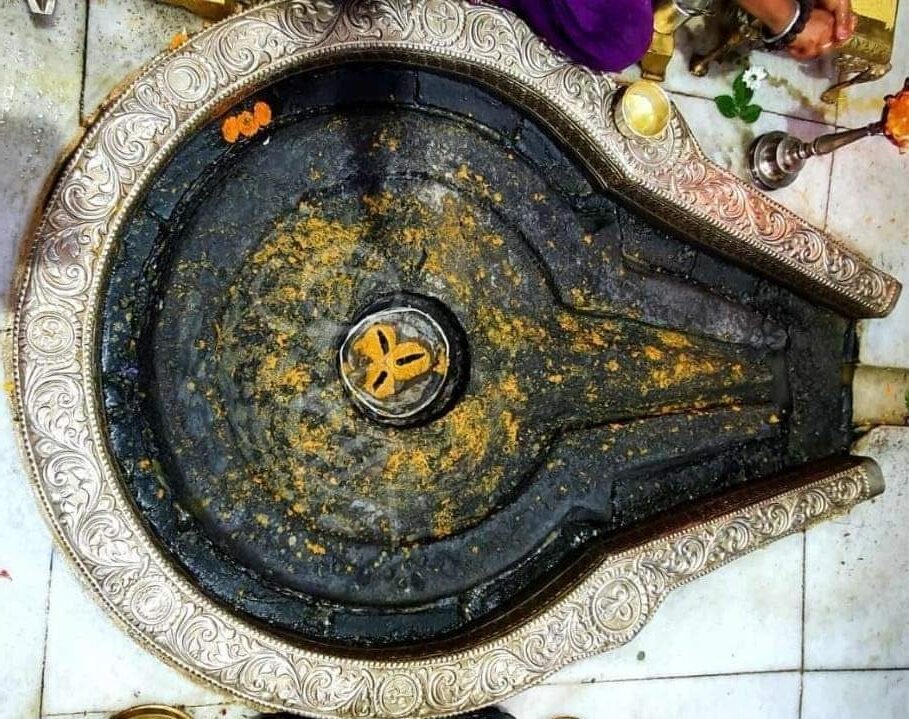
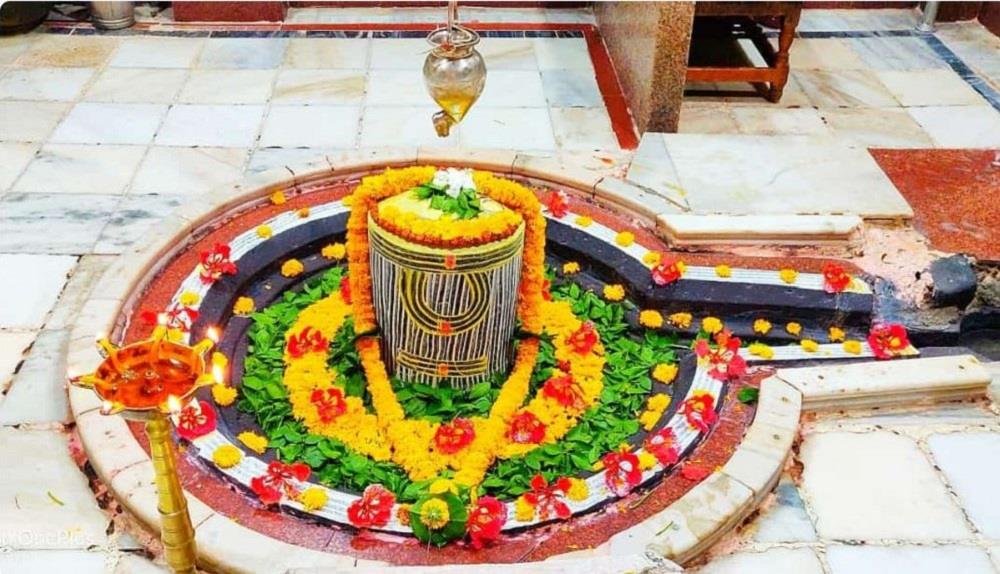
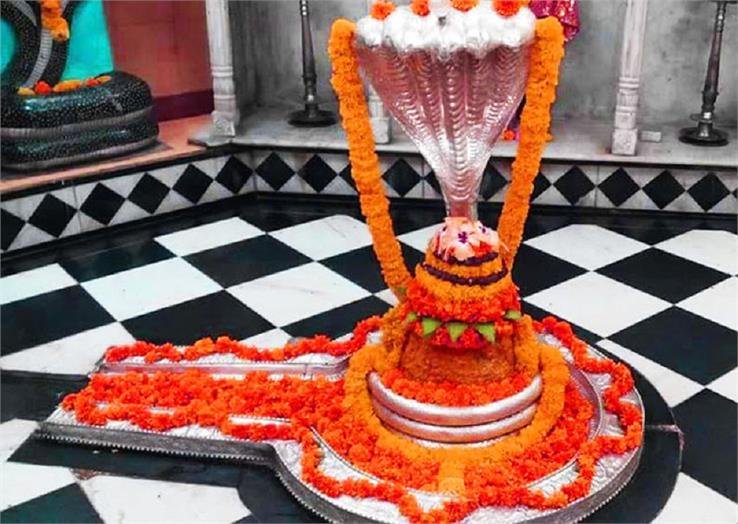
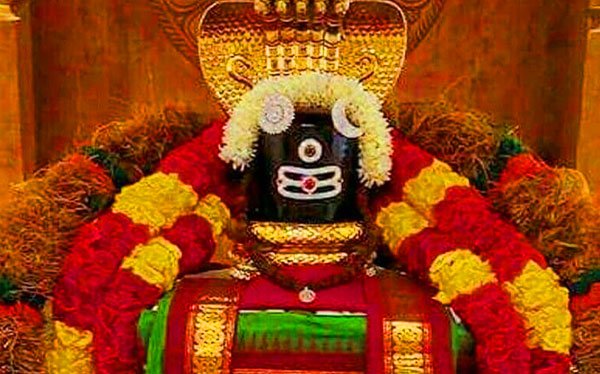
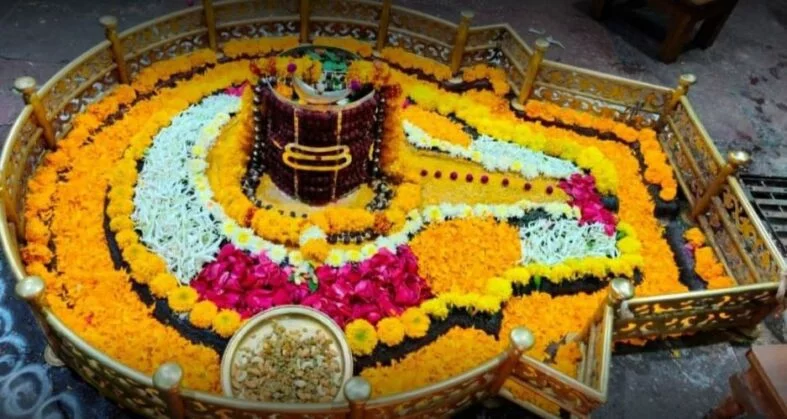
 Frequently Asked Questions (FAQs) about the 12 Jyotirlingas:
Frequently Asked Questions (FAQs) about the 12 Jyotirlingas:


